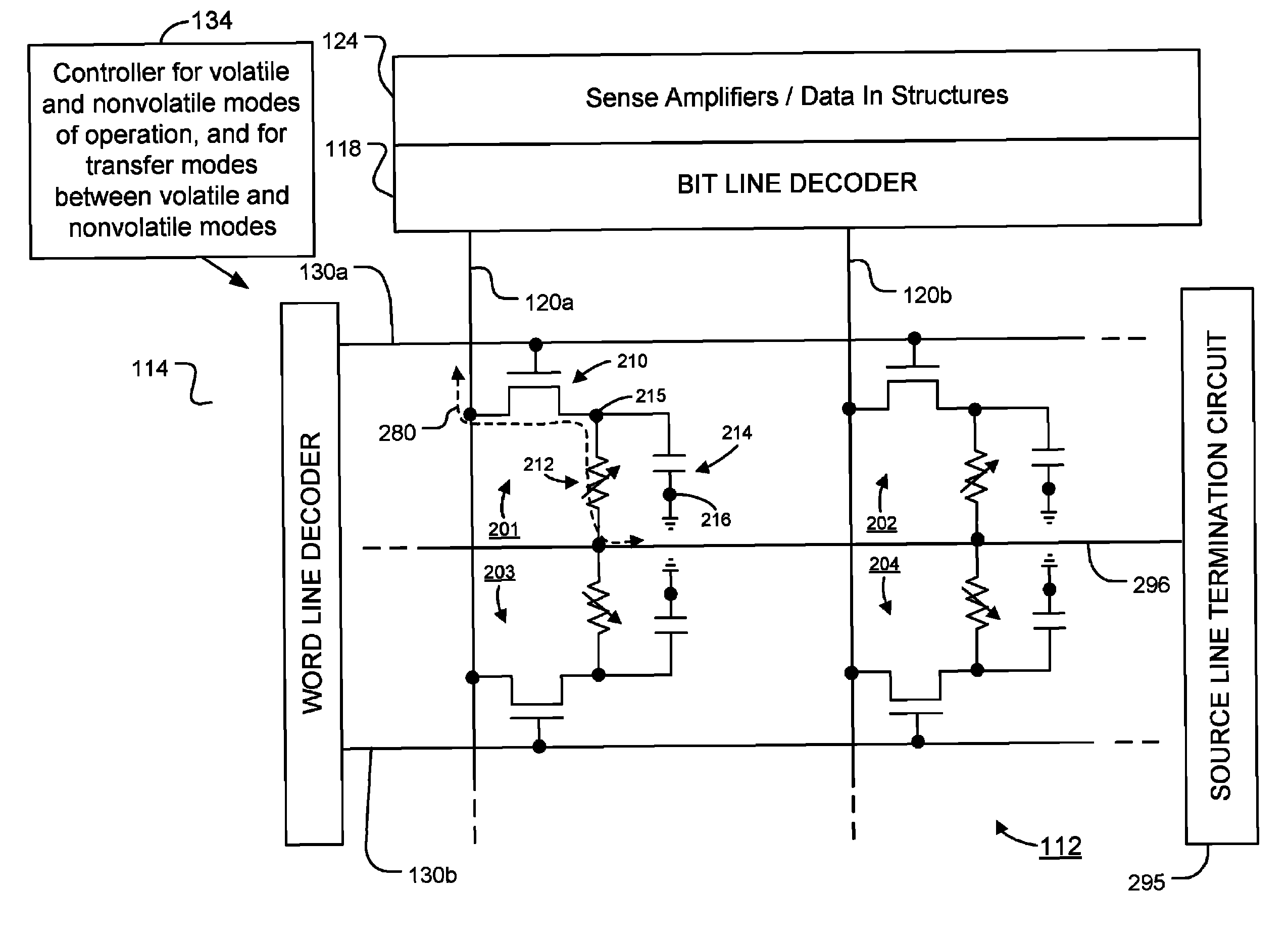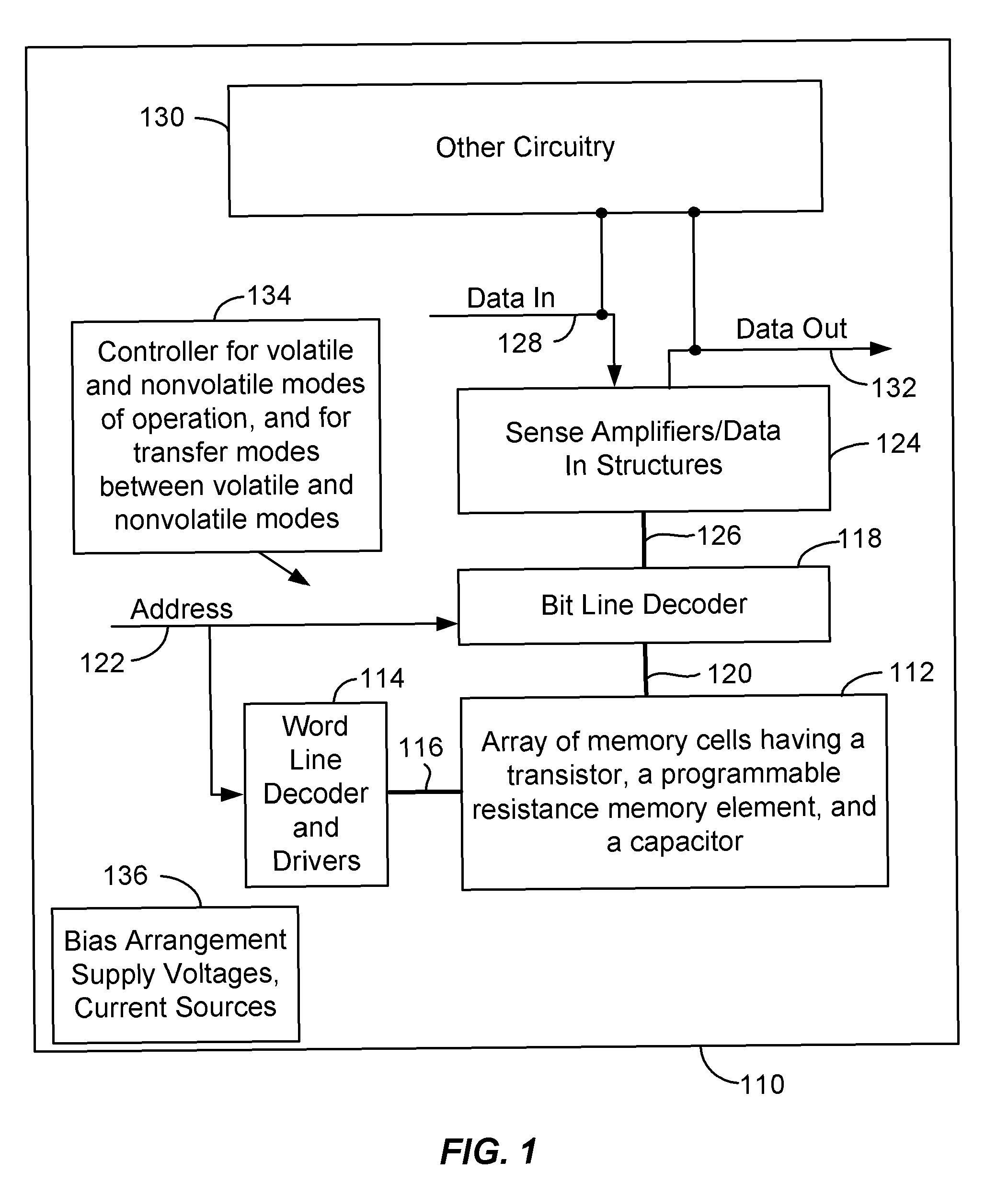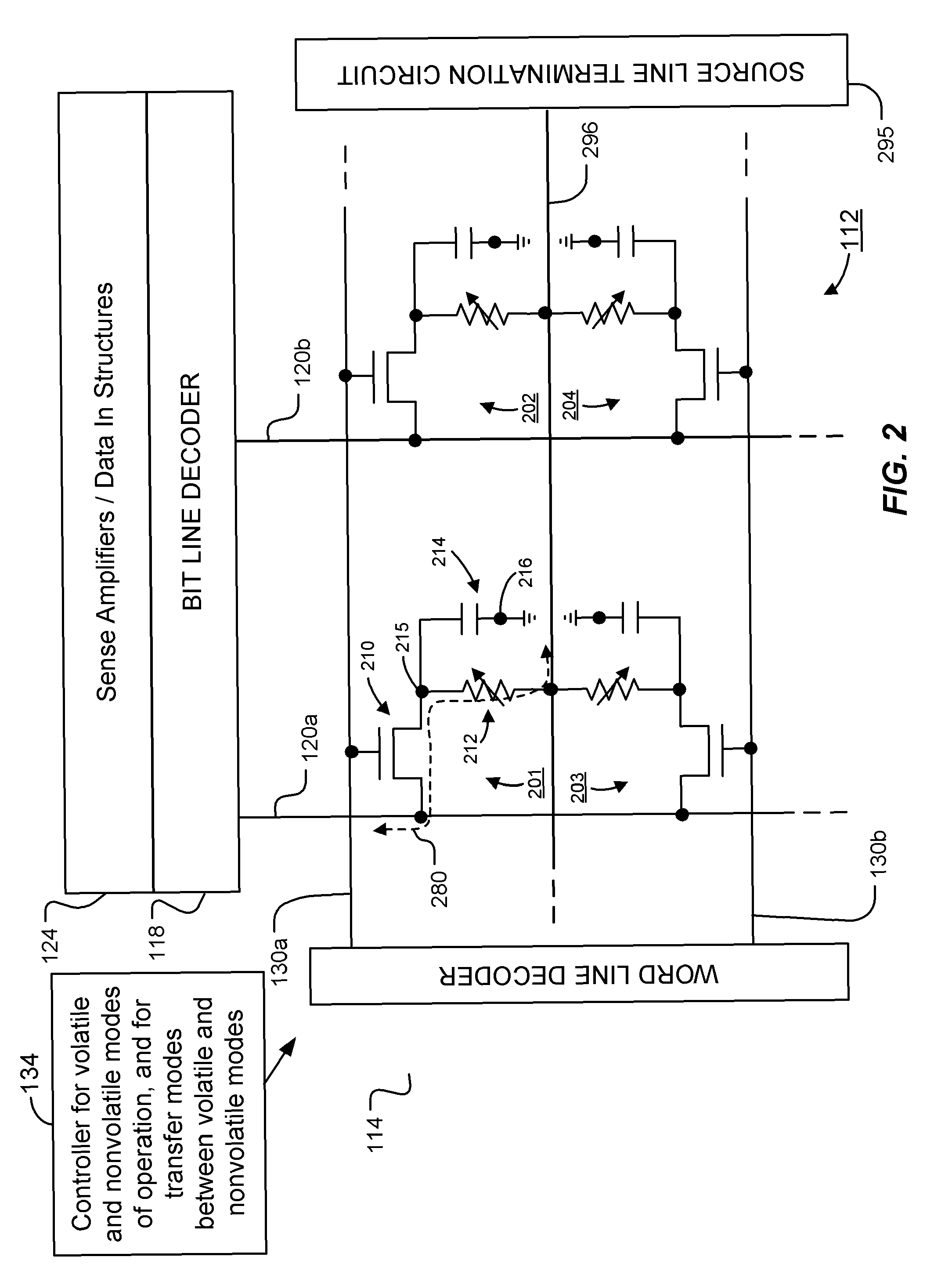One-transistor, one-resistor, one-capacitor phase change memory
a technology of phase change memory and resistor, which is applied in the field of memory devices, can solve the problems of limited cycle endurance, high reset current, slow set speed, etc., and achieve the effect of fast program/erase speed
- Summary
- Abstract
- Description
- Claims
- Application Information
AI Technical Summary
Benefits of technology
Problems solved by technology
Method used
Image
Examples
first embodiment
[0034]FIG. 2 illustrates a schematic diagram of array 112 of the integrated circuit 110. Each of the memory cells of the array 112 has a field effect transistor, a programmable resistance memory element (represented as a variable resistor in the Figure), and a charge storage capacitor. Four memory cells 201-204 are illustrated in FIG. 2, representing a small section of the array 112 that can include millions of memory cells. As described in more detail below, each memory cell can be operated as high-speed volatile memory using the capacitor as a data storage element, and can be operated as nonvolatile memory using the programmable resistance memory element as a data storage element. The memory cells can also be operated in a transfer mode to directly transfer a data value stored in the programmable resistance memory element to the capacitor, and vice-versa, without the need for a read operation.
[0035]In FIG. 2 the programmable resistance memory elements couple the sources of the acc...
second embodiment
[0081]FIG. 8 illustrates a schematic diagram of array 112 of FIG. 2. In FIG. 8 the memory cells of the array 112 are implemented using a floating body cell (FBC) which utilizes transient charge storage in the floating channel body of access transistors formed on a silicon on insulator (SOI) or the like. The stored charge causes a detectable shift in the threshold voltage of the access transistor, which is used to indicate stored data. Additional details concerning floating body cells can be seen, for example, in Nitayama et al., “Overview and Future Challenge of Floating Body Cell (FBC) Technology for Embedded Applications”, International Symposium on VLSI Technology, Systems, and Applications, April 2006, pp. 1-3, which is incorporated by reference herein. See also U.S. Pat. No. 7,208,799 and U.S. Pat. No. 6,661,042, both of which are incorporated by reference herein.
[0082]The floating channel body takes the place of a discrete capacitor by using the capacitance formed between the ...
PUM
 Login to View More
Login to View More Abstract
Description
Claims
Application Information
 Login to View More
Login to View More - R&D
- Intellectual Property
- Life Sciences
- Materials
- Tech Scout
- Unparalleled Data Quality
- Higher Quality Content
- 60% Fewer Hallucinations
Browse by: Latest US Patents, China's latest patents, Technical Efficacy Thesaurus, Application Domain, Technology Topic, Popular Technical Reports.
© 2025 PatSnap. All rights reserved.Legal|Privacy policy|Modern Slavery Act Transparency Statement|Sitemap|About US| Contact US: help@patsnap.com



